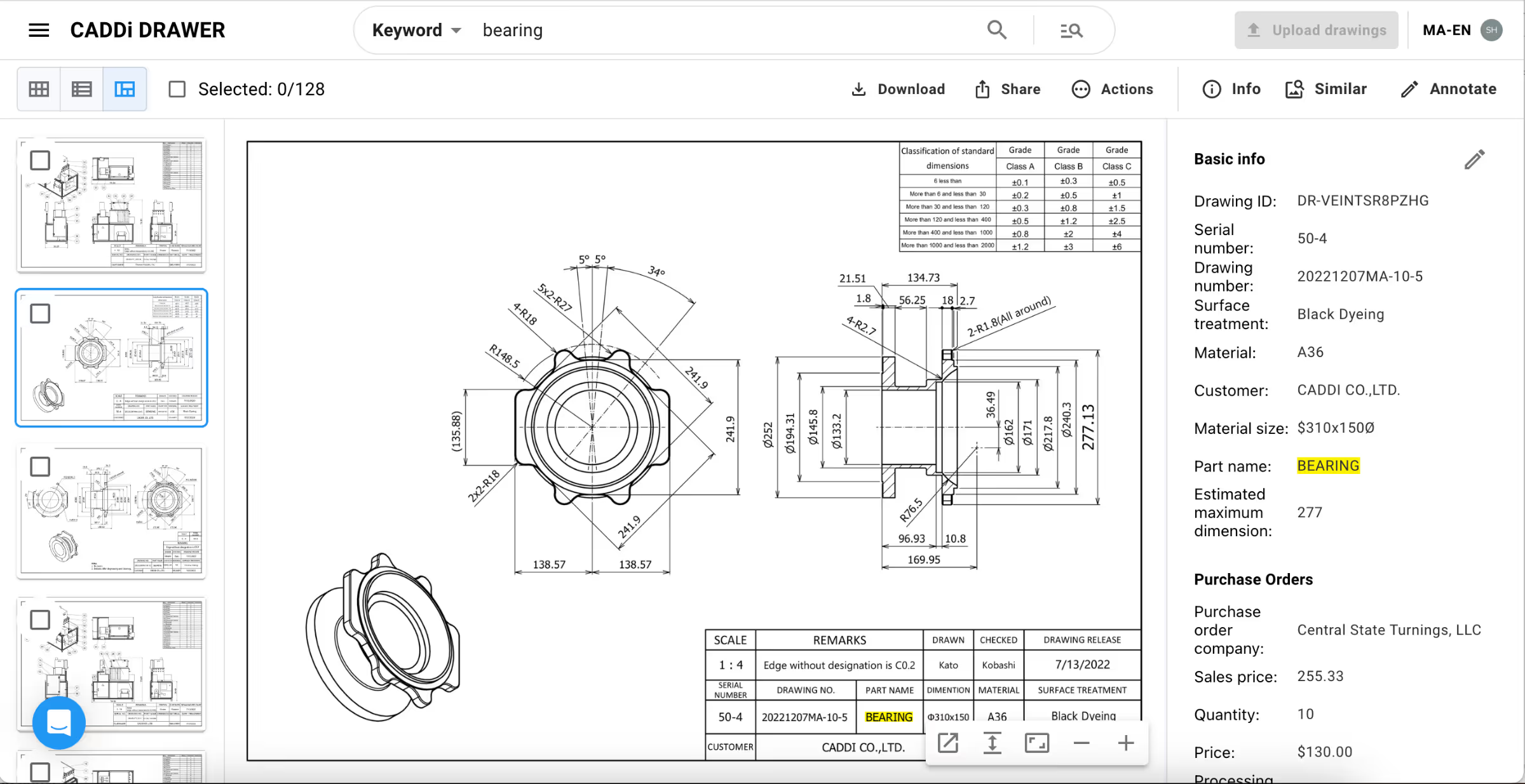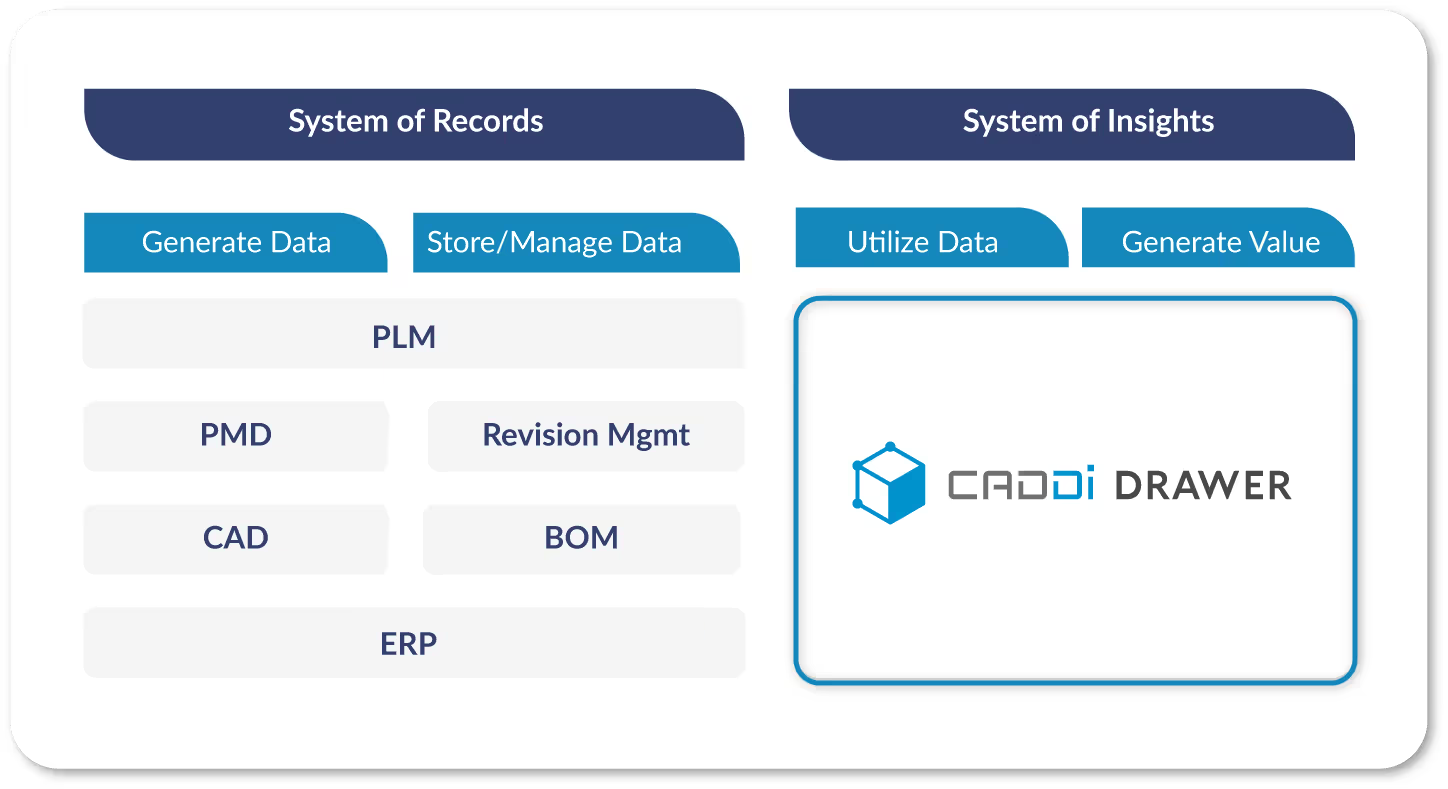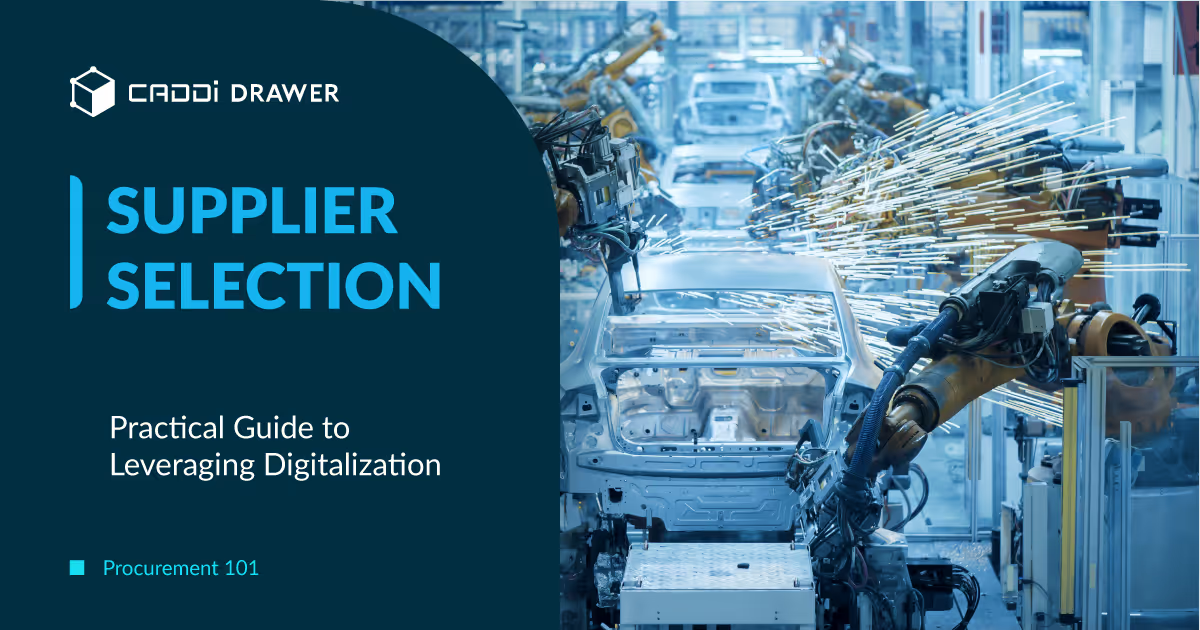Procurement 101: Supply Chain Visibility (SCV) – How to enhance it

Table of Contents

Strategic approaches and real-world applications of supply chain visibility (SCV) are reshaping the landscape of procurement and manufacturing. By navigating through the complexities and harnessing the benefits SCV offers, companies are setting new benchmarks for efficiency and resilience.
The Importance of Supply Chain Visibility
At the heart of SCV lies the principle of end-to-end transparency. It’s the ability to peer into every corner of the supply chain, identifying potential bottlenecks before they escalate into a full-blown crisis. For procurement professionals, this visibility is not just a convenience—it’s a strategic asset. Oracle’s 2022 Supply Chain Survey underscores this, revealing companies that integrate advanced analytics and AI across their supply chains can slash recovery times by 50% and reduce new product lead times by 30%. These aren’t just numbers; they’re tangible benefits that can significantly enhance operational efficiency and market responsiveness.
SCV’s importance is further magnified when considering the complexity of modern supply chains. With components crisscrossing the globe, the need for a transparent, efficient system has never been more acute. Companies like NetSuite highlight how SCV projects empower teams to identify and rectify weaknesses within the supply chain, preventing inventory shortfalls and fulfillment issues before they become larger problems. This proactive approach not only safeguards against disruptions but also paves the way for increased customer satisfaction and reduced costs.
Challenges in Achieving Supply Chain Visibility
Despite its clear benefits, the path to achieving comprehensive SCV is fraught with challenges. Data inconsistency and disparate business processes often stand as formidable barriers. Many organizations find themselves ensnared in siloed operations, where sales, manufacturing, planning, logistics, and procurement operate independently, leading to inaccuracies and inefficiencies. This fragmentation hampers the ability to gain a holistic view of the supply chain, making it challenging to track goods or swiftly exchange data among internal teams and partners.
Another significant hurdle is the lack of upstream and downstream visibility. Understanding the flow of products to customers and the status of supplies from vendors is crucial for maintaining a balanced inventory and meeting consumer demands. Yet, achieving this level of insight requires not just technology, but a culture of collaboration and openness among all stakeholders, from suppliers to distributors.
Key Components for Supply Chain Visibility
Materializing supply chain visibility requires the integration of several key components, which together create a transparent, efficient, and responsive supply chain network. These components address the challenges of data inconsistency, fragmentation, and lack of real-time information, ensuring that companies can track and manage their supply chain activities effectively.
Streamlined Processes
For visibility to be effective, supply chain processes must be streamlined and standardized. This reduces complexities and inconsistencies that can cloud visibility. Well-designed operations ensure that processes are as efficient as possible, minimizing waste and delays. Streamlining operations also means establishing clear protocols for handling data, goods, and communications, which is essential for maintaining real-time visibility.
Integration of Systems
A crucial aspect of well-designed operations is the integration of various systems used across the supply chain. This includes everything from procurement systems and ERP (Enterprise Resource Planning) software to logistics and CRM (Customer Relationship Management) platforms. Integration ensures that data flows seamlessly between different parts of the supply chain, providing a unified view of operations. This is essential for tracking and managing inventory, orders, and shipments effectively.
Data Accuracy and Consistency
Well-designed operations prioritize data accuracy and consistency, which are vital for supply chain visibility. Accurate data ensures that decision-makers have the information they need to make informed choices. Consistent data, on the other hand, means that information is standardized across the supply chain, making it easier to compare and analyze. This is particularly important in a complex supply chain that involves multiple partners and systems.
Agility and Responsiveness
Supply chains are dynamic and often subject to rapid changes. Well-designed operations provide the agility needed to respond quickly to these changes. This includes the ability to adjust inventory levels, reroute shipments, or change suppliers at short notice. Agility is supported by visibility, as it allows companies to identify issues and opportunities in real-time and take proactive steps to address them.
Continuous Improvement
Finally, well-designed operations incorporate mechanisms for continuous improvement. This involves regularly reviewing processes, technologies, and strategies to identify areas for enhancement. Continuous improvement is critical for maintaining high levels of supply chain visibility over time, as it ensures that operations remain efficient and effective in the face of changing market conditions and business needs.
Strategic Approaches to Enhance Supply Chain Visibility
Adopting a strategic approach to SCV is not merely about investing in technology; it’s about cultivating a culture of transparency and collaboration. A case in point is the high-tech industry, where companies are often at the forefront of SCV due to their reliance on a vast network of suppliers and contract manufacturers. These organizations exemplify the strategic integration of SCV by maintaining a real-time overview of every component’s journey through the supply chain. This approach is not just about keeping tabs on materials; it’s a strategic maneuver to preempt disruptions and streamline operations.
To overcome the challenges of SCV, procurement professionals must prioritize the standardization of data and processes across the board. Ensuring that information flows seamlessly between departments and external partners is crucial. In practice, this might involve adopting a universal data format or implementing a centralized platform that allows for real-time data exchange and collaboration. The goal here is to eliminate silos and foster an environment where information is a shared asset, not a guarded treasure.
Further, the importance of upstream and downstream visibility cannot be overstated. Companies that excel in SCV maintain open lines of communication with both suppliers and customers. This bi-directional transparency enables them to adjust to supply chain disruptions with agility, ensuring that inventory levels are aligned with demand and that potential issues with suppliers are addressed proactively.
Case Studies and Industry Insights
In the realm of SCV, real-world examples offer valuable insights into the strategic and operational benefits of enhanced visibility. One notable case involves a leading global retailer that leveraged SCV to transform its inventory management system. By implementing real-time tracking technologies and AI-driven analytics, the retailer was able to reduce stockouts by 60% and cut excess inventory by 30%, resulting in significant cost savings and improved customer satisfaction.
Another example comes from the automotive industry, where a manufacturer integrated SCV solutions to gain better visibility into its supply chain. This initiative allowed the company to identify bottlenecks in the supply of critical components, reducing lead times by 25% and enhancing the overall resilience of its supply chain.
These case studies underscore the transformative power of SCV when applied strategically. By embracing transparency and leveraging the right technologies, companies can achieve remarkable improvements in efficiency, responsiveness, and resilience.
The Business Value of Supply Chain Visibility
The business value of SCV extends far beyond operational efficiencies. A study by MIT Sloan found that companies investing in supply chain transparency not only gained consumer trust but also saw increased sales from socially conscious buyers. This research highlights the broader impact of SCV on brand reputation and customer loyalty, underscoring the importance of visibility in today’s market.
Moreover, SCV plays a critical role in mitigating risks and enhancing decision-making. By providing a comprehensive view of the supply chain, companies can identify potential disruptions before they occur and devise effective contingency plans. This proactive approach to risk management can safeguard against revenue loss and ensure business continuity in the face of unforeseen challenges.
In conclusion, the strategic importance of supply chain visibility cannot be overstated. By fostering collaboration, leveraging technology, and embracing transparency, companies can unlock the full potential of their supply chains, driving business value and competitive advantage. As the global market continues to evolve, the ability to maintain a clear, comprehensive view of the supply chain will be a key determinant of success.
How CADDi Drawer Can Help
CADDi Drawer, a cutting-edge digital platform designed for the manufacturing and procurement sectors, directly addresses the pressing challenges in data management within the supply chain visibility landscape. Its capabilities can provide an innovative solution to many of the hurdles discussed earlier, particularly those related to data inconsistency, fragmentation, and the lack of a centralized system for data sharing and analysis.
Tackling Data Inconsistency and Fragmentation
One of the major challenges in achieving supply chain visibility is the inconsistency and fragmentation of data across different segments of the supply chain. CADDi Drawer’s platform can mitigate these issues by offering a unified platform where data from various sources can be collected, standardized, and integrated. This seamless integration ensures that all stakeholders have access to consistent and accurate data, reducing the risks of inaccuracies and inefficiencies that typically arise from disjointed data systems.

Centralized Data Management
CADDi Drawer also addresses the need for a centralized data management system. By providing a single source of truth for all supply chain data, it enables companies to gain a holistic view of their operations. This centralized approach not only facilitates better decision-making but also enhances the ability to track and manage inventory, orders, and supply chain activities in real-time. The platform’s advanced analytics capabilities further empower businesses to analyze data comprehensively, identify patterns, and make data-driven decisions to improve supply chain efficiency and responsiveness.

Enhancing Collaboration and Standardization
Collaboration and standardization across the supply chain are crucial for overcoming visibility challenges. CADDi Drawer fosters collaboration by enabling easy sharing and access to data among all supply chain participants. This collaborative environment ensures that everyone is on the same page, enhancing coordination and efficiency. Additionally, the platform supports data standardization, which is vital for integrating data from diverse sources and ensuring that it is comparable and actionable.
Strategic approaches and real-world applications of supply chain visibility (SCV) are reshaping the landscape of procurement and manufacturing. By navigating through the complexities and harnessing the benefits SCV offers, companies are setting new benchmarks for efficiency and resilience.
The Importance of Supply Chain Visibility
At the heart of SCV lies the principle of end-to-end transparency. It’s the ability to peer into every corner of the supply chain, identifying potential bottlenecks before they escalate into a full-blown crisis. For procurement professionals, this visibility is not just a convenience—it’s a strategic asset. Oracle’s 2022 Supply Chain Survey underscores this, revealing companies that integrate advanced analytics and AI across their supply chains can slash recovery times by 50% and reduce new product lead times by 30%. These aren’t just numbers; they’re tangible benefits that can significantly enhance operational efficiency and market responsiveness.
SCV’s importance is further magnified when considering the complexity of modern supply chains. With components crisscrossing the globe, the need for a transparent, efficient system has never been more acute. Companies like NetSuite highlight how SCV projects empower teams to identify and rectify weaknesses within the supply chain, preventing inventory shortfalls and fulfillment issues before they become larger problems. This proactive approach not only safeguards against disruptions but also paves the way for increased customer satisfaction and reduced costs.
Challenges in Achieving Supply Chain Visibility
Despite its clear benefits, the path to achieving comprehensive SCV is fraught with challenges. Data inconsistency and disparate business processes often stand as formidable barriers. Many organizations find themselves ensnared in siloed operations, where sales, manufacturing, planning, logistics, and procurement operate independently, leading to inaccuracies and inefficiencies. This fragmentation hampers the ability to gain a holistic view of the supply chain, making it challenging to track goods or swiftly exchange data among internal teams and partners.
Another significant hurdle is the lack of upstream and downstream visibility. Understanding the flow of products to customers and the status of supplies from vendors is crucial for maintaining a balanced inventory and meeting consumer demands. Yet, achieving this level of insight requires not just technology, but a culture of collaboration and openness among all stakeholders, from suppliers to distributors.
Key Components for Supply Chain Visibility
Materializing supply chain visibility requires the integration of several key components, which together create a transparent, efficient, and responsive supply chain network. These components address the challenges of data inconsistency, fragmentation, and lack of real-time information, ensuring that companies can track and manage their supply chain activities effectively.
Streamlined Processes
For visibility to be effective, supply chain processes must be streamlined and standardized. This reduces complexities and inconsistencies that can cloud visibility. Well-designed operations ensure that processes are as efficient as possible, minimizing waste and delays. Streamlining operations also means establishing clear protocols for handling data, goods, and communications, which is essential for maintaining real-time visibility.
Integration of Systems
A crucial aspect of well-designed operations is the integration of various systems used across the supply chain. This includes everything from procurement systems and ERP (Enterprise Resource Planning) software to logistics and CRM (Customer Relationship Management) platforms. Integration ensures that data flows seamlessly between different parts of the supply chain, providing a unified view of operations. This is essential for tracking and managing inventory, orders, and shipments effectively.
Data Accuracy and Consistency
Well-designed operations prioritize data accuracy and consistency, which are vital for supply chain visibility. Accurate data ensures that decision-makers have the information they need to make informed choices. Consistent data, on the other hand, means that information is standardized across the supply chain, making it easier to compare and analyze. This is particularly important in a complex supply chain that involves multiple partners and systems.
Agility and Responsiveness
Supply chains are dynamic and often subject to rapid changes. Well-designed operations provide the agility needed to respond quickly to these changes. This includes the ability to adjust inventory levels, reroute shipments, or change suppliers at short notice. Agility is supported by visibility, as it allows companies to identify issues and opportunities in real-time and take proactive steps to address them.
Continuous Improvement
Finally, well-designed operations incorporate mechanisms for continuous improvement. This involves regularly reviewing processes, technologies, and strategies to identify areas for enhancement. Continuous improvement is critical for maintaining high levels of supply chain visibility over time, as it ensures that operations remain efficient and effective in the face of changing market conditions and business needs.
Strategic Approaches to Enhance Supply Chain Visibility
Adopting a strategic approach to SCV is not merely about investing in technology; it’s about cultivating a culture of transparency and collaboration. A case in point is the high-tech industry, where companies are often at the forefront of SCV due to their reliance on a vast network of suppliers and contract manufacturers. These organizations exemplify the strategic integration of SCV by maintaining a real-time overview of every component’s journey through the supply chain. This approach is not just about keeping tabs on materials; it’s a strategic maneuver to preempt disruptions and streamline operations.
To overcome the challenges of SCV, procurement professionals must prioritize the standardization of data and processes across the board. Ensuring that information flows seamlessly between departments and external partners is crucial. In practice, this might involve adopting a universal data format or implementing a centralized platform that allows for real-time data exchange and collaboration. The goal here is to eliminate silos and foster an environment where information is a shared asset, not a guarded treasure.
Further, the importance of upstream and downstream visibility cannot be overstated. Companies that excel in SCV maintain open lines of communication with both suppliers and customers. This bi-directional transparency enables them to adjust to supply chain disruptions with agility, ensuring that inventory levels are aligned with demand and that potential issues with suppliers are addressed proactively.
Case Studies and Industry Insights
In the realm of SCV, real-world examples offer valuable insights into the strategic and operational benefits of enhanced visibility. One notable case involves a leading global retailer that leveraged SCV to transform its inventory management system. By implementing real-time tracking technologies and AI-driven analytics, the retailer was able to reduce stockouts by 60% and cut excess inventory by 30%, resulting in significant cost savings and improved customer satisfaction.
Another example comes from the automotive industry, where a manufacturer integrated SCV solutions to gain better visibility into its supply chain. This initiative allowed the company to identify bottlenecks in the supply of critical components, reducing lead times by 25% and enhancing the overall resilience of its supply chain.
These case studies underscore the transformative power of SCV when applied strategically. By embracing transparency and leveraging the right technologies, companies can achieve remarkable improvements in efficiency, responsiveness, and resilience.
The Business Value of Supply Chain Visibility
The business value of SCV extends far beyond operational efficiencies. A study by MIT Sloan found that companies investing in supply chain transparency not only gained consumer trust but also saw increased sales from socially conscious buyers. This research highlights the broader impact of SCV on brand reputation and customer loyalty, underscoring the importance of visibility in today’s market.
Moreover, SCV plays a critical role in mitigating risks and enhancing decision-making. By providing a comprehensive view of the supply chain, companies can identify potential disruptions before they occur and devise effective contingency plans. This proactive approach to risk management can safeguard against revenue loss and ensure business continuity in the face of unforeseen challenges.
In conclusion, the strategic importance of supply chain visibility cannot be overstated. By fostering collaboration, leveraging technology, and embracing transparency, companies can unlock the full potential of their supply chains, driving business value and competitive advantage. As the global market continues to evolve, the ability to maintain a clear, comprehensive view of the supply chain will be a key determinant of success.
How CADDi Drawer Can Help
CADDi Drawer, a cutting-edge digital platform designed for the manufacturing and procurement sectors, directly addresses the pressing challenges in data management within the supply chain visibility landscape. Its capabilities can provide an innovative solution to many of the hurdles discussed earlier, particularly those related to data inconsistency, fragmentation, and the lack of a centralized system for data sharing and analysis.
Tackling Data Inconsistency and Fragmentation
One of the major challenges in achieving supply chain visibility is the inconsistency and fragmentation of data across different segments of the supply chain. CADDi Drawer’s platform can mitigate these issues by offering a unified platform where data from various sources can be collected, standardized, and integrated. This seamless integration ensures that all stakeholders have access to consistent and accurate data, reducing the risks of inaccuracies and inefficiencies that typically arise from disjointed data systems.

Centralized Data Management
CADDi Drawer also addresses the need for a centralized data management system. By providing a single source of truth for all supply chain data, it enables companies to gain a holistic view of their operations. This centralized approach not only facilitates better decision-making but also enhances the ability to track and manage inventory, orders, and supply chain activities in real-time. The platform’s advanced analytics capabilities further empower businesses to analyze data comprehensively, identify patterns, and make data-driven decisions to improve supply chain efficiency and responsiveness.

Enhancing Collaboration and Standardization
Collaboration and standardization across the supply chain are crucial for overcoming visibility challenges. CADDi Drawer fosters collaboration by enabling easy sharing and access to data among all supply chain participants. This collaborative environment ensures that everyone is on the same page, enhancing coordination and efficiency. Additionally, the platform supports data standardization, which is vital for integrating data from diverse sources and ensuring that it is comparable and actionable.
Ready to see CADDi Drawer in action? Get a personalized demo.
Subscribe to our Blog!
Related Resources












.svg)



.svg)
.svg)
.svg)


